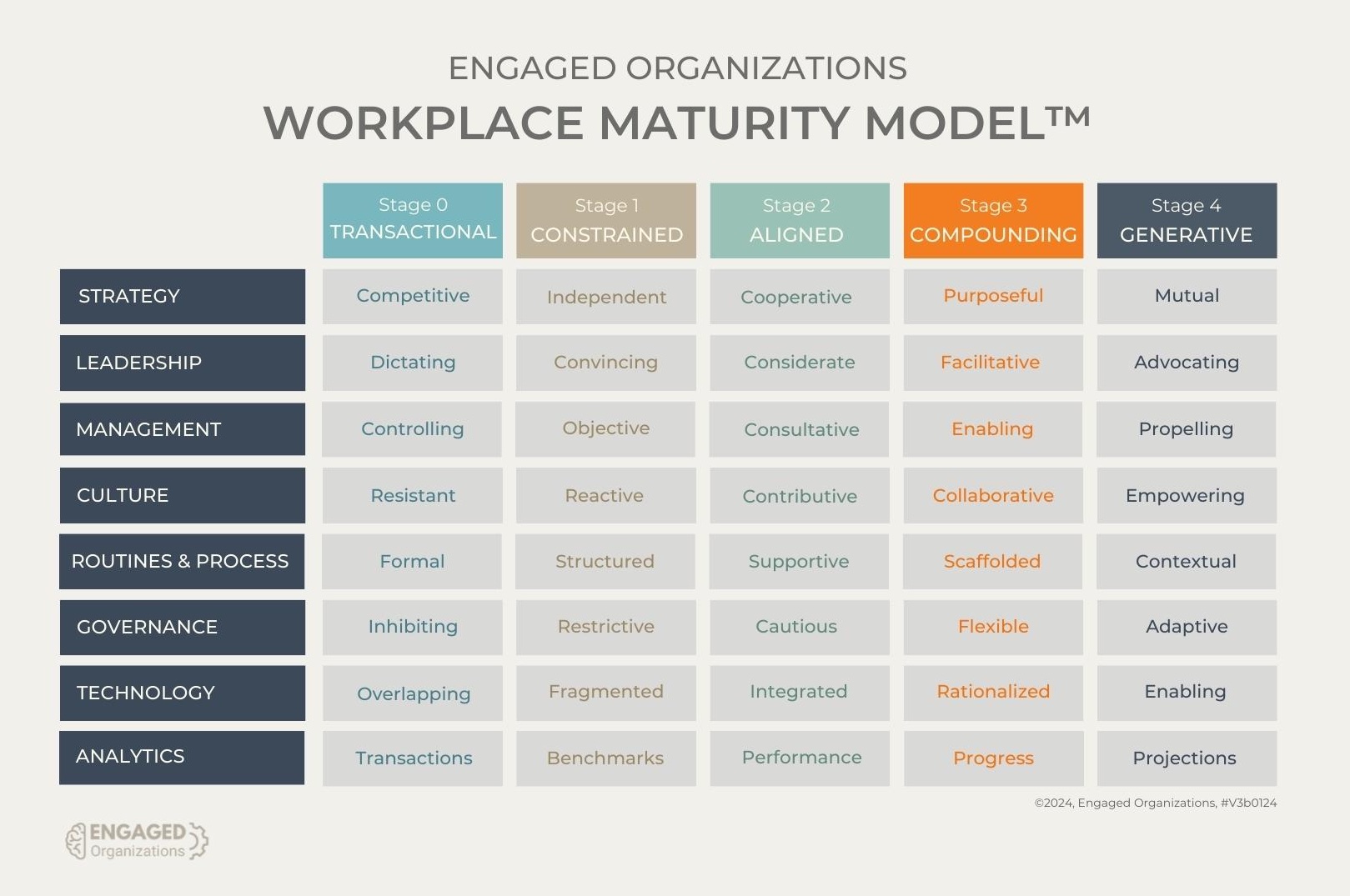-
WORKPLACE MATURITY MODEL
Organizational effectiveness requires coherence across operational disciplines.
The Workplace Maturity Model helps identify opportunities to improve coherence.
The Workplace Maturity Model is a framework that defines the competencies and attributes that contribute to a community-centric culture within a team, group, organization, or social network. In community-centric cultures individuals feel seen, valued, and empowered – all the things that increase engagement.
Community-centric cultures generate shared value for every stakeholder. For organizations, strong community cultures improve efficiency, accelerate change, and increase innovation. For individuals, strong community cultures increase networks, trust, learning, and leadership skills.
Operational Competencies
The Workplace Maturity Model identifies a set of competencies and how are adapted to prioritize inclusion, engagement, and shared value – which addressed together result in and reinforce a community-centric culture.
Strategy
Community-centric strategies define a shared purpose and shared value for every key stakeholder group within a network.Leadership
Culture
Management
Programming
Governance
Technology
Metrics
This Model Can Be Used to:
- Identify cultural flash points
- Focus on tangible objectives
- Align stakeholders
- Develop an operational roadmap
- Track and reflect on progress
This Model Can Not:
- Tell you what to do
- Prioritize investments
- Explain the current reality



